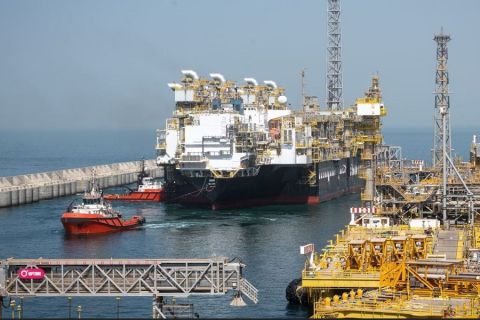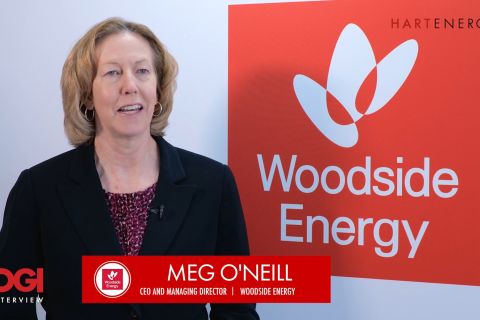On November 29, 2010, the U.S. Department of Transportation’s Pipeline and Hazardous Materials Safety Administration (PHMSA) published a Final Rule, titled “Updates to Pipeline And Liquefied Natural Gas Reporting Requirements,” more commonly known as the “One Rule.” The amendments and additions are meant to improve the data collection process used by PHMSA to analyze the performance of operators and the pipeline industry. The rule makes numerous changes to the reporting requirements for pipeline operators subject to 49 CFR Parts 191, 192, 193 and 195; it became effective January 1 of this year.
Online reporting
First, PHMSA has made major changes in the reporting procedures for all operators. After the effective date of the final rule, all required reports, with two exceptions, must be submitted electronically using the PHMSA Online Data Entry System (ODES). Recognizing that some operators may be unable to report electronically, PHMSA has provided an alternative reporting method. Operators must submit a written request explaining the “undue burden and hardship” of digital reports. PHMSA will review the request and, if authorized, will notify the operator in writing. The length of time for which the alternate method is valid will be established by PHMSA.
Operators can view the online system by selecting Online Data Entry from the PHMSA Pipeline Safety Community page at phmsa.dot.gov/pipeline/. Operators must have an Operator ID and Personal Identification Number to submit reports. Links are provided to register for the reporting system. The data-entry page also includes links to obtain paper copies of the forms currently in use.
The two reports that will continue to be submitted on paper are the Safety Related Condition and Offshore Pipeline Condition reports. PHMSA elected not to change these reporting methods after reviewing operator comments and data-information needs.
Second, in conjunction with the new reporting requirements and the Distribution Integrity Management rule, PHMSA revised the annual reports for operators. These changes were submitted to the Office of Management and Budget (OMB) for approval and submitted copies of the forms can be found on its website using search functions at reginfo.gov/public/do/PRAMain.
Third, although not part of the One Rule, Mechanical Fitting Failures, a new report, will be required from distribution operators. This was included in the Final Rule that added the Distribution Integrity Management Program (DIMP) Subpart P to 49 CFR Part 192. Initially, the term “coupling” was used for this report, but it was changed to “mechanical” based on comments and review by PHMSA. The current timeline for beginning collection of this data is January 1, 2011. A separate form for reporting this data has been proposed and can be found in the review section of the OMB website.
Finally, liquefied natural gas (LNG) operators subject to 49 CFR Part 193 will now be required to submit incident, safety-related condition and annual reports. The updated code section §193.2011 directs the operator to file according to the requirements of 49 CFR 191.
Revised definition
The Final Rule amends the definition of “incident” in 49 CFR 191.3 applicable to gas pipeline operators. As of January 1, 2011, the definition is:
Incident means any of the following events:
(1) An event that involves a release of gas from a pipeline, or of LNG, liquefied petroleum gas, refrigerant gas or gas from an LNG facility, and that results in one or more of the following consequences:
(i) A death or personal injury necessitating in-patient hospitalization;
(ii) Estimated property damage of $50,000 or more, including loss to the operator and others, or both, but excluding cost of gas lost;
(iii) Unintentional estimated gas loss of three million cubic feet or more.
(2) An event that results in an emergency shutdown of an LNG facility. Activation of an emergency-shutdown system for reasons other than an actual emergency does not constitute an incident.
(3) An event that is significant in the judgment of the operator, even though it did not meet the criteria of paragraphs (1) or (2) of this definition.
One of the criteria in the current definition is an event that involves a release of gas and “estimated property damage, including cost of gas lost, of the operator or others, or both, of $50,000 or more.” This dollar amount was established in 1984 when the threshold was raised from $5,000 to $50,000 to lessen reporting burdens and ensure that only significant incidents are reported.
The cost of gas has increased since the $50,000 level was established in 1984 and, as a consequence, more incidents are being reported even though less gas was released. In 2005, the Interstate Natural Gas Association of America petitioned PHMSA for a change of this threshold by adopting a volumetric basis for the amount of gas lost. And, in 2006, the Government Accountability Office recommended to PHMSA that this definition be revised.
As a result, PHMSA has modified the criteria for an incident regarding the cost of gas and property damage. They will each be considered separately (in conjunction with a release of gas) when determining if an event is a reportable incident. PHMSA did not elect to change the $50,000 threshold, which is now considered only for property damage, but it may consider a change in the future.
Another consequence in the Notice of Proposed Rulemaking, but not included in the final rule, was to include “an explosion or fire not intentionally set by the operator” under item (1) in the definition. This is often referred to as a “fire first” situation when a fire unrelated to pipeline facilities causes damage to gas facilities and escaping gas is ignited. This proposed addition to the definition generated numerous comments objecting to its inclusion.
PHMSA did not include this criteria in the revised definition. However, it did state in the Final Rule that there may be instances where such situations could cause safety problems. As a result, changes were made in the instructions for the incident report to further clarify that secondary ignition need only be reported when damage to pipeline facilities exceeds $50,000.
The regulations for both gas and liquid pipeline operators will allow two options for reporting incidents or accidents. Operators can continue to make a telephonic notice to the National Response Center as is currently required, or can use the electronic reporting system.
New reports
Annual reports for gas transmission pipeline operators are also changing. Reporting integrity management (IM) performance will now be done annually. Interstate operators must submit one report for each commodity group. Intrastate operators must complete specified sections of the report as necessary for each state in which they operate. This should lessen the reporting burden and synchronize the data reported for IM purposes with the annual pipeline data reported to PHMSA.
Two new code sections, 49 CFR 191.22 and 49 CFR 195.64 National Registry of Pipeline and LNG Operators, are being added to the regulations. These sections require operators to obtain an Operator Identification Number (OPID) or, if a number is already assigned to an operator, they must validate the information associated with the number by June 30, 2012. The operator must use the OPID for all required reports, including submissions to the National Pipeline Mapping System.
These two new sections will require operators to report various changes to their pipeline systems. PHMSA must be notified of construction, upgrades, rehabilitation, and other actions costing more than $10 million no later than 60 days prior to the start of the project. This notification also includes construction of 10 or more miles of new pipeline or construction of new LNG facilities. Notification within 60 days after a change occurs will be required for changes in name, entity responsible for safety programs, operating entities and sale or purchase of 50 miles or more of pipeline or pipeline facilities.
Shale-gas impact
With the development of the extensive shale-gas fields in Texas and Pennsylvania, midstream operators should pay close attention to the development of gathering and transmission pipeline infrastructure and determine if new or acquired systems will be subject to the federal pipeline regulations. If so, obtaining an OPID and making the appropriate notifications will be required.
PHMSA is amending §191.1 Scope, to reflect the changes in applicability of the regulations relating to gathering lines made to 49 CFR Part 192 with the adoption of the gathering line rule in 2006. This change clarifies that unregulated gathering lines are not subject to the reporting requirements. In addition to the requirement for electronic reporting and obtaining or verifying an OPID, two other changes were made in 49 CFR Part 195. Liquid operators must now have a procedure to calculate a reasonable initial estimate of the product released when reporting an accident meeting the criteria of §195.52. If significant new information is obtained during the emergency-response phase of an accident, operators must make an additional telephonic report to the National Response Center.
The second change is in annual reporting, requiring operators operating in multiple states to separately complete sections of the annual report where information is to be reported for each state.
This final rule makes significant changes in several code sections for reporting pipeline information to PHMSA. Required reports and associated instructions are also going through major updates (pending approval by OMB) to ease operators’ reporting burden and standardize reporting procedures and the data reported. Electronic reporting will enable PHMSA to more quickly review the submitted data and analyze the overall performance of the pipeline-safety system.
Recommended Reading
Technip Energies Wins Marsa LNG Contract
2024-04-22 - Technip Energies contract, which will will cover the EPC of a natural gas liquefaction train for TotalEnergies, is valued between $532 million and $1.1 billion.
Tech Trends: Halliburton’s Carbon Capturing Cement Solution
2024-02-20 - Halliburton’s new CorrosaLock cement solution provides chemical resistance to CO2 and minimizes the impact of cyclic loading on the cement barrier.
BP: Gimi FLNG Vessel Arrival Marks GTA Project Milestone
2024-02-15 - The BP-operated Greater Tortue Ahmeyim project on the Mauritania and Senegal maritime border is expected to produce 2.3 million tonnes per annum during it’s initial phase.
The OGInterview: How do Woodside's Growth Projects Fit into its Portfolio?
2024-04-01 - Woodside Energy CEO Meg O'Neill discusses the company's current growth projects across the globe and the impact they will have on the company's future with Hart Energy's Pietro Pitts.
TotalEnergies Acquires Eagle Ford Interest, Ups Texas NatGas Production
2024-04-08 - TotalEnergies’ 20% interest in the Eagle Ford’s Dorado Field will increase its natural gas production in Texas by 50 MMcf/d in 2024.





